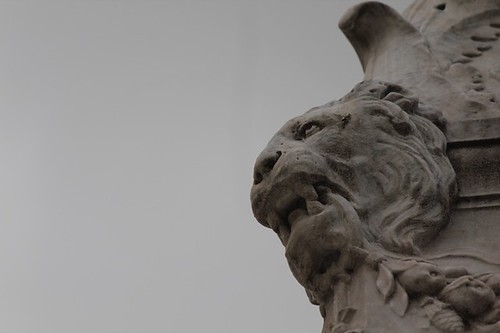Viterbo, city in the "Tuscia" area, offers several monuments and things to do and see.
On May 14, I went to visit this city principally for two reasons: the underground Viterbo and the medieval quarter of San Pellegrino. It was the first visit "for tourism".
You can get there by train: Trains depart from Rome Ostiense station and make many stops within the city of Rome (Trastevere, quattro venti, valle aurelia, are some examples) and the journey take a couple of hours.
I arrived at the station "Viterbo Porta Romana" just before 10: I decided to start my visit in the town from the Viterbo underground, so I headed to Piazza della Morte: the strange name of that square is due to the "company of death" which at one time ran the graves!
In this square is located the shop/ticket office/access to the underground city: the Tours starts every half hour and the price of the ticket is 4 euro (in Orvieto I had paid 6 euro). You can visit about 150 meters of tunnels and the guide told us that as their "private company" (sorry for the quotes, but I do not know which words to use to explain) have in managing this part of Viterbo approximately from last year and they are trying to dig also other parts that can be dug, but, unfortunately, there are a lot of problems and these problem are not always easy to solve (especially everything related to the bureaucratic part of the story). The underground part of Viterbo is in tuff, such as Pitigliano, Orvieto and Civita di Bagnoregio. If you're nearby, you can visit this part of Viterbo: it's cute and the price is, after all, still affordable.
Once you have finished your visit, you must go to the medieval quarter of San Pellegrino: when you walk along the streets of this area of the city, seems to have stepped back in time: there are many details that attract the attention of visitors. There are also a lot of things which attract the attention of tourists end there are a lot of things that you can photograph.
After that, I walked to Piazza San Lorenzo where I knew to find several important buildings of the history of Viterbo: the Palace of the Popes, the Cathedral of San Lorenzo and the Mansion of "Valentino della Pagnotta" (from the name of the prior who bought the building in 1458); in front of the mansion there is a beautiful building: if I'm not mistaken there is the seat of the Bishop and, if you go up the stairs, you find yourself in a terrace on Viterbo (but does not have a great view: you can see important buildings, but the biggest part of the view is on the modern part of Viterbo).
Taken from the fatigue, the last leg of my day was the Piazza del Plebiscito with the government palace, the Palazzo dei Priori and the sarcophagus of Beautiful Galliana (
at that link you can find some information about "Galliana", but is written in Italian).
There are many other things to do in Viterbo, such as the Cathedral and many other churches that are found there. Maybe one day I will return to see those too.
There is the link to the set on Flickr with all the pictures I took during my day in Viterbo.



















